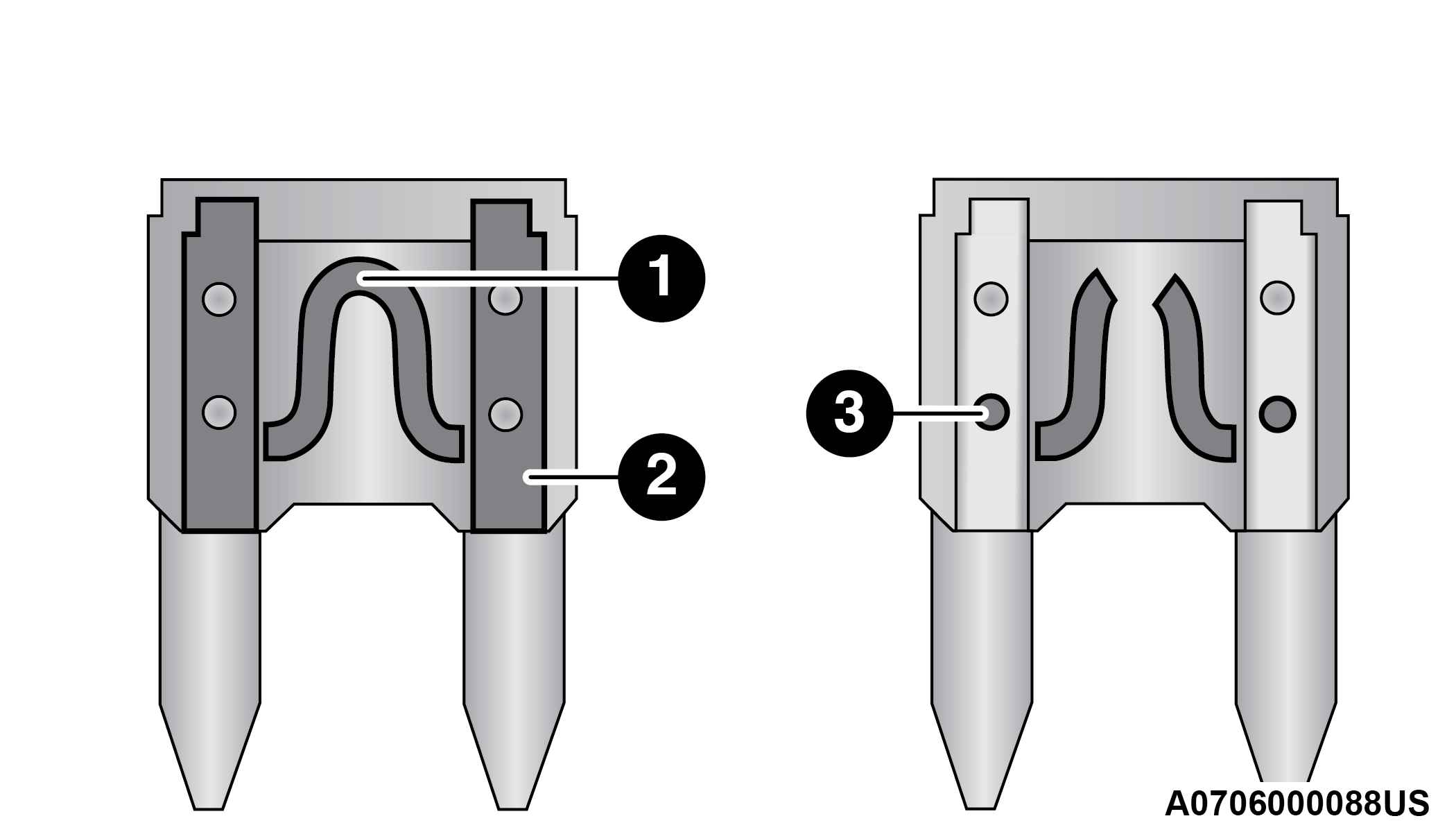-
When replacing a blown fuse, always use an appropriate replacement fuse with the same amp rating as the original fuse. Never replace a fuse with another fuse of higher amp rating. The use of a fuse with a rating other than indicated may result in a dangerous electrical system overload. If a properly rated fuse continues to blow, it indicates a problem in the circuit that must be corrected. Never replace a blown fuse with metal wires or any other material. Do not place a fuse inside a circuit breaker cavity or vice versa. Failure to use proper fuses may result in serious personal injury, fire and/or property damage.
-
Before replacing a fuse, make sure that the ignition is off and that all the other services are switched off and/or disengaged.
-
If the replaced fuse blows again, contact an authorized dealer.
-
If a general protection fuse for safety systems (air bag system, braking system), power unit systems (engine system, transmission system) or steering system blows, contact an authorized dealer.
If it is necessary to wash the engine compartment, take care not to directly hit the fuse box, and the windshield wiper motors with water.
The fuses protect electrical systems against excessive current.
When a device does not work, you must check the fuse element inside the blade fuse for a break/melt.
Also, please be aware that using power outlets for extended periods of time with the engine off may result in vehicle battery discharge.

Blade Fuses
| 1 — Fuse Element |
| 2 — Blade Fuse with a good/functional fuse element |
| 3 — Blade Fuse with a bad/not functional fuse element (blown fuse) |